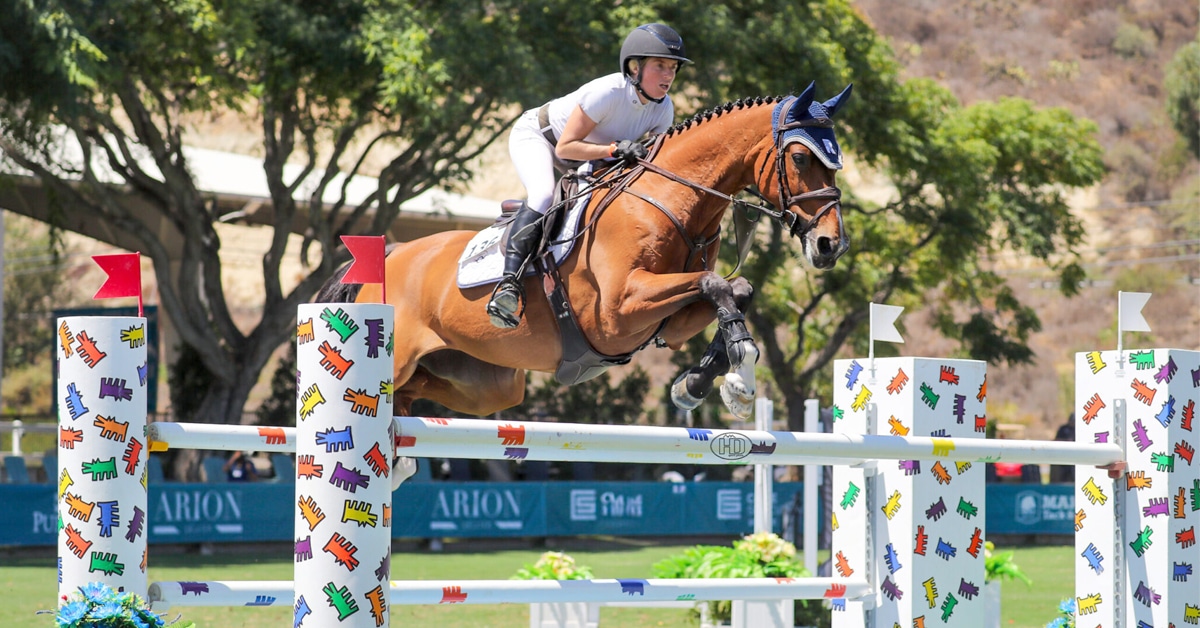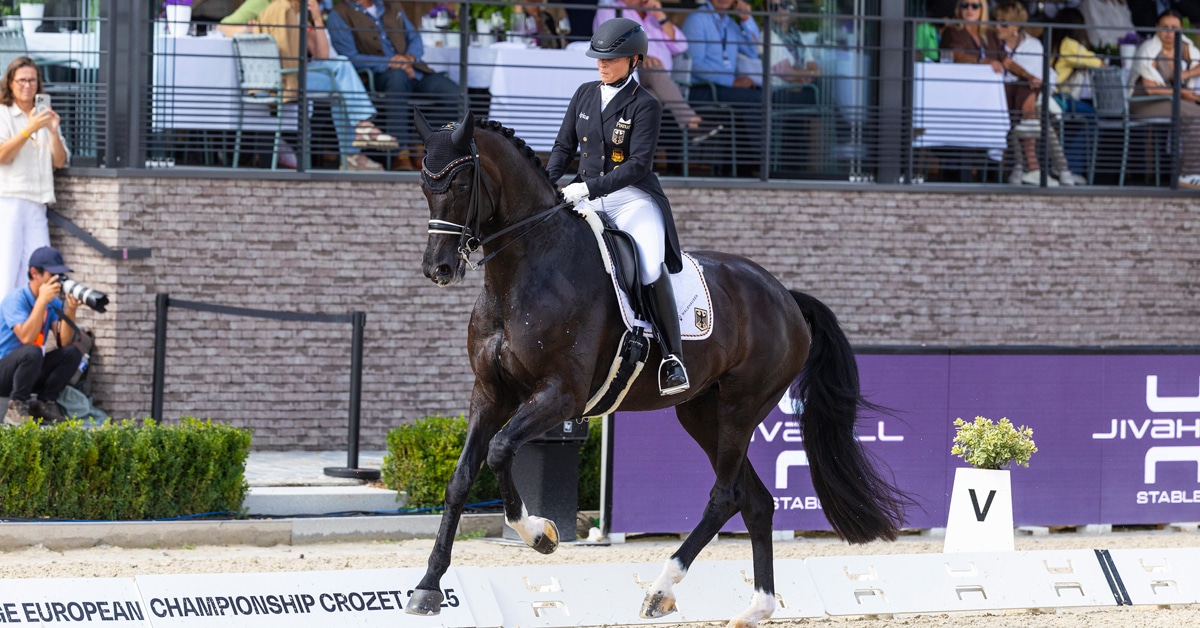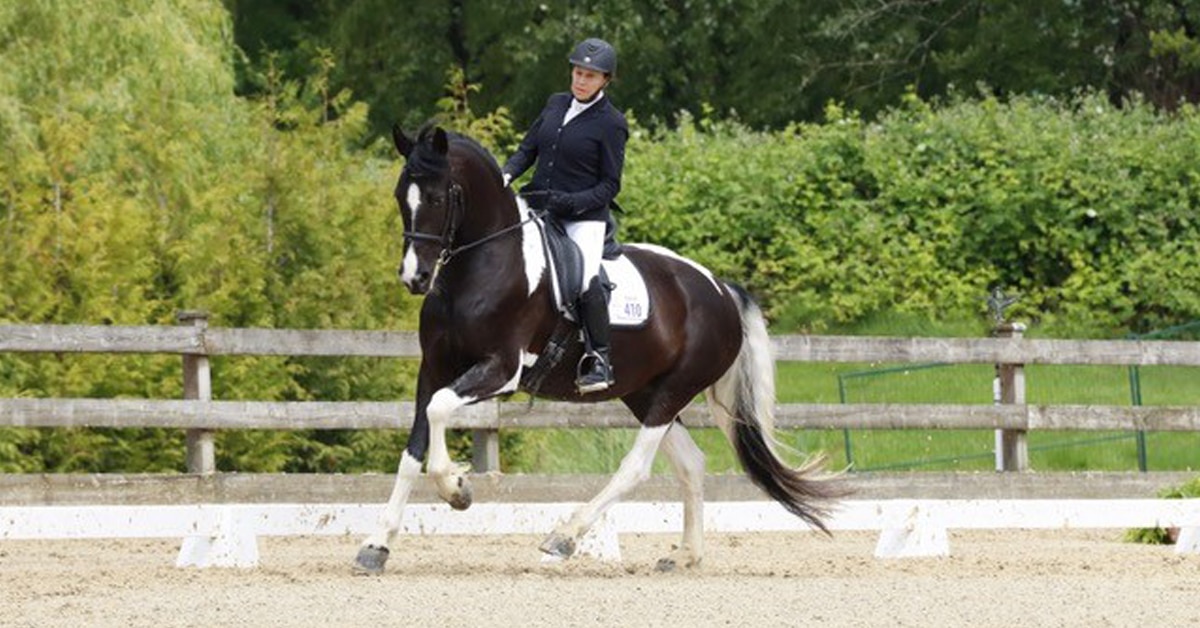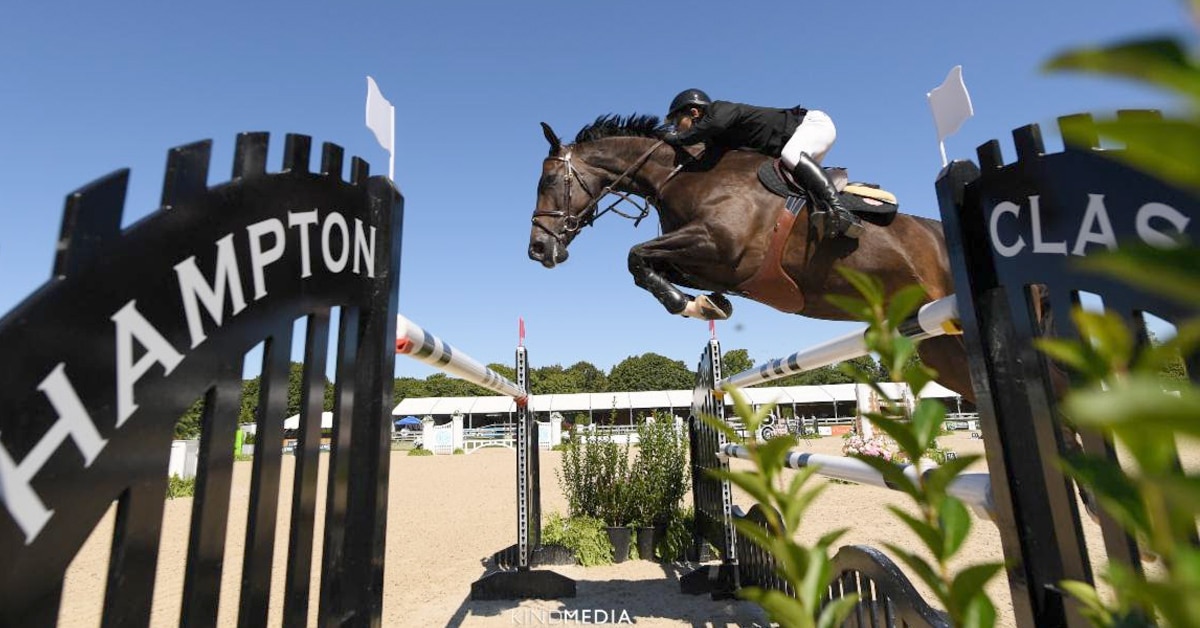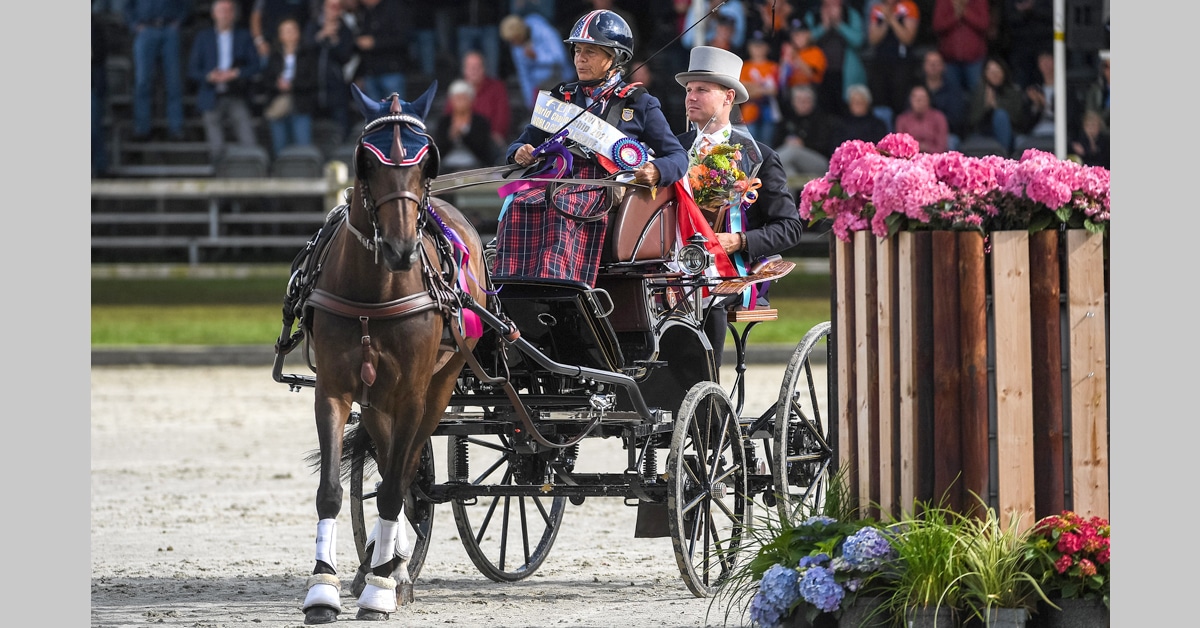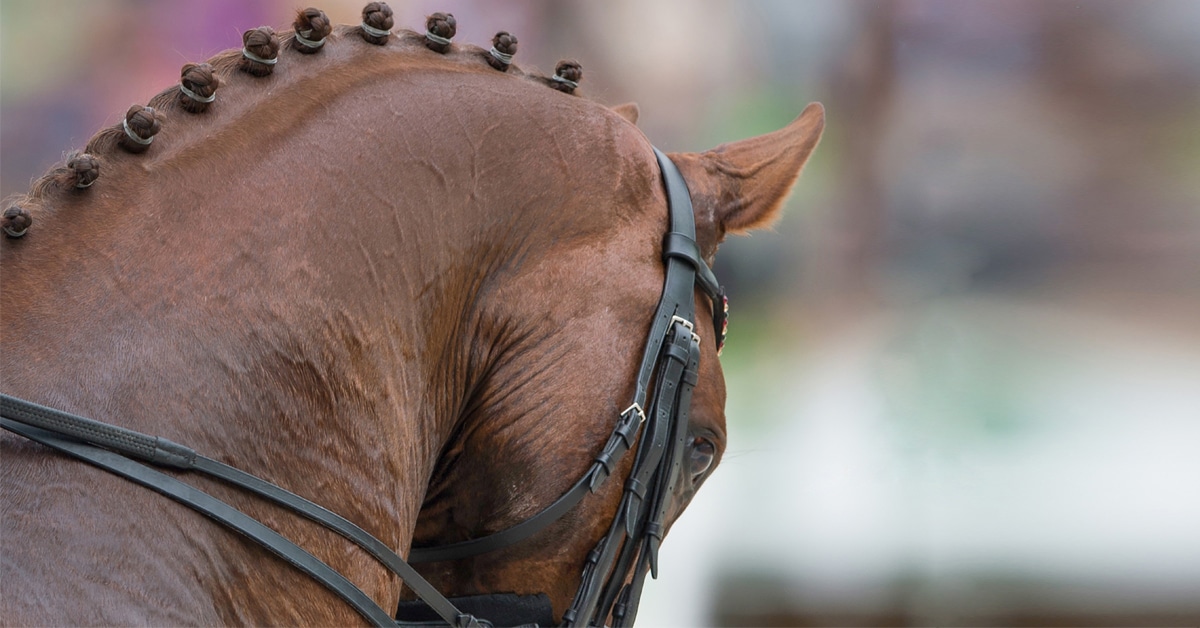The FEI is still some way off formalising the status of hyperflexion in its rules and regulations, despite having listed hyperflexion among many types of abuse in its legal case against disgraced dressage rider/trainer Cesar Parra, banned for 15 years by the FEI Tribunal.
But simultaneously the FEI is still resisting the addition of hyperflexion to its list of abusive practices in FEI General Regulations (GRs), telling HorseSport.com that more research is needed.
Fuller details from the 69-page decision notice in the Parra case have not been widely reported – HorseSport.com is only English-language media to have followed up in more depth.
The Tribunal notice records that in May 2024, the FEI sent Parra an outline of the allegations against him. This listed hyperflexion/rollkur as an example. Other practices were listed as separate types of abuse:
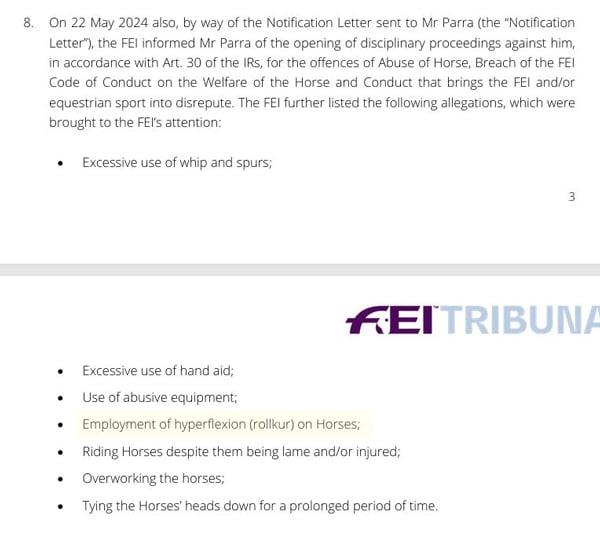
The exact same list is then repeated three times in the decision notice, which charts many months of proceedings and legal arguments up to the full Tribunal hearing in Lausanne in March. There are references to over-bending to the point that the horse’s head is almost touching the chest.
Separately, the FEI rules revision process for 2026 is currently underway, with Poland lobbying the FEI to add hyperflexion to the list of abusive practices in Article 142 of the GRs. However, the FEI has declined, stating (in responses before the Parra decision) that “The FEI does not support [Poland’s] proposal. Given all the current working groups, studies and action plan on horse welfare, any potential change should be carefully assessed and reviewed, taking into account all elements. Therefore, the FEI suggest to wait until we have more information and outcome on said studies and working groups to then potentially suggest changes as part of next year’s Rules revision process.”
HorseSport.com asked the FEI to comment on the contradiction between its response to Poland and its stance in the Parra case. A FEI spokesmen replied that expert witness (British veterinarian and researcher Dr. Rachel Murray) had clarified that “ the hyperflexion to which the horses had been subjected [by Parra], used in combination with other equipment, in those particular instances was abuse. The assessment was made taking into account all the specific and individual circumstances of the case at hand.
“Rolling out a globally-applicable legal requirement or prohibition that is applied in each and every case and that applies to all athletes in the same manner requires careful consideration of all factors that cannot be made in haste.”
Yet, earlier references to hyperflexion by the FEI legal department clearly do not make the same distinction as Dr. Murray.
The list of abusive practices in FEI GRs is not intended to be exclusive; discretion is made as to whether the “action or omission causes or is likely to cause pain or unnecessary discomfort to the horse.” Nonetheless, other riders have argued at Tribunal that if something is not expressly mentioned in FEI rules, it cannot be an offence. This was one of Parra’s defence tactics, too – which would be invalid if the Poland NF proposal was adopted.
Hyperflexion – ‘condemned’ but not banned
Contrary to popular belief, hyperflexion is not banned under FEI rules.
In 2006, an FEI workshop concluded that hyperflexion had implications for respiration and mental stress, although was unlikely to cause “lasting damage” in professional hands. But in 2008, an FEI welfare subcommittee denounced it as equine mental abuse.
In 2010, the FEI redefined it as flexion of the horse’s neck achieved through “aggressive” force. Diagrams in FEI manuals showed a difference between aggressive riding with the head tucked in, and the more elongated posture known as “low deep and round (LDR)” allowed for in short spells in the warm-up. The FEI “condemned” hyperflexion and “did not support it” in 2010, but has never banned it in the rule books.
The word is not even mentioned in FEI dressage sport rules, FEI Veterinary or General Regulations, nor in the online FEI dressage judging manual. FEI dressage judging guidelines (only available as a hard copy book) convey that hyperflexion should be penalised in the scoring, because the horse would be judged to be over-bent, but does not state it is banned.
Reference to use of hyperflexion in the warm-up arena appears in a later annex to the FEI dressage stewards’ online manual, in a single sentence with no illustration. All it says is: “Long, deep and round riding is accepted, unless used excessively or prolonged (hyperflexion of the neck). There is a danger when copied by unskilled riders. There is a fine line between training and overtraining!” The main 49-page manual does not mention hyperflexion or rollkur at all (and deals with how stewards should react to horse abuse of any sort in a mere four paragraphs.)
But these are guidelines, not enforceable rules. Its absence from actual rules may help to explain why no FEI dressage rider has ever been yellow-carded or disciplined for hyperflexion.
Fifty-eight peer-reviewed, independent studies into hyperflexion already exist. The much-decorated veterinary researcher Professor Paul McGreevy and colleagues published a meta study of all 58. Just one ‒ by a single Dutch researcher in 2006 ‒ found hyperflexion to be potentially beneficial, when comparing elite dressage horses with recreational ones. The vast majority concluded hyperflexion had welfare “implications”, with 28 studies saying welfare was impaired.
Spot the difference
The German National Federation (FN) recently hosted a webinar about “horse friendly gymnastics” with speakers including Isabell Werth. It cost 100 euros (CAN $160) to view and was not widely publicised, aside from the FN’s own brief account.
A transcript is not available, but extracts and screenshots from the webinar showing “best practice” have circulated online.
Here are two photos: one a screenshot of Cesar Parra lungeing a horse in a gadget to maintain its frame, and another representative of a rider in the FN webinar, which is offered as ‘good technique.’
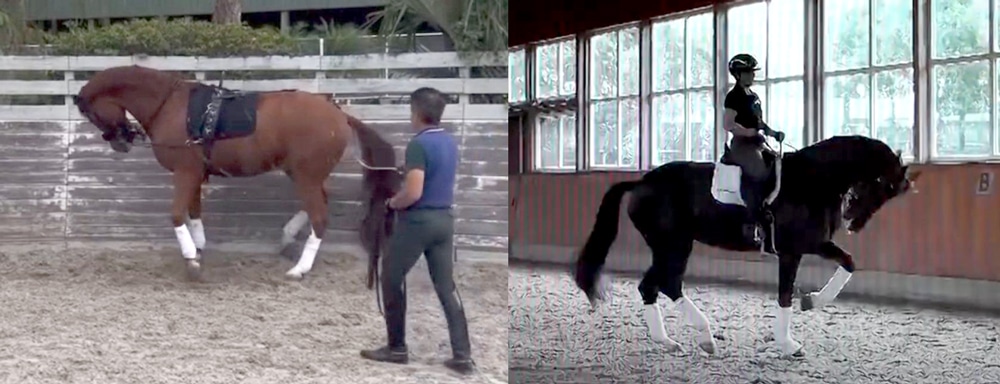
The FN’s press release says: “There was also a consensus that the topics of leaning and head-neck posture are also strongly discussed in public spaces. The FN sees it as its duty to provide orientation here. An important impulse came from the audience: We all have an educational mission. If we want to attract more people to equestrian sports, we also have to better explain what good training looks like and facilitate access to horses.”
It remains to be seen if the general public can see a difference.
More News

